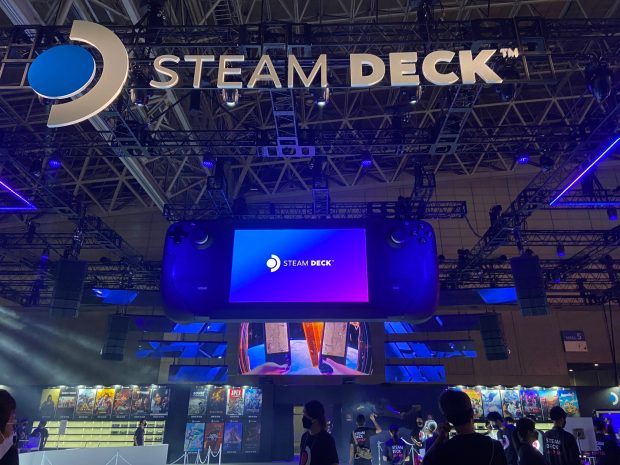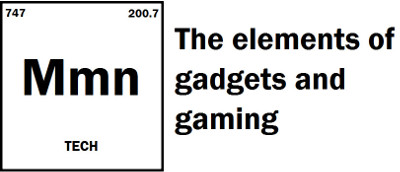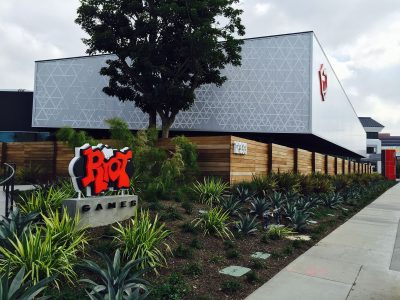

Can the Steam Deck mesh with Japan’s weird gaming culture?
Gaming in Japan is weird. Weird in the sense that they buck the tends of every other video game market in the world. They’re off on their own little island, literally and figuratively. Probably the best example is how arcades, while starting to decline nowadays, continued to flourish long after they disappeared from North America. But perhaps their strangest gaming trend is their strong preference for handhelds over consoles and PCs. It’s the only major market where this is the case. Something which Valve sees as a major opportunity to get their foot under the cherry blossoms.
For a bit of context, a lot of Westerners tend to think of Japan as this high tech wonder world. From the dazzling lights of Shibuya and Dōtonbori, the bullet trains that crisscross the countryside, the wall to wall electronics stores of Akihabara, to its obsession with robots, there certainly seems to be some truth to the stereotype. However, this is just what the mass media presents to the outside world. In reality, the country is still firmly stuck in the early 2000s in a lot of ways. Something which tends to shock Western travelers when they discover a lot of shops are still cash-only. This is also reflected in their gaming, which seems to align with trends from 2005 more than they do in 2022.
Smartphones are one such thing that follows this pattern. Back in 2012, we here in North America, looking at the mobile gaming market soar while the Vita and 3DS lagged in sales, began to wonder if the handheld format was truly dead. Much like how the iPhone and iPad killed off pretty much every other dedicated portable device. Yet in Japan, while smartphones are near ubiquitous now, like they are elsewhere, they took a lot longer to reach mainstream penetration than they did in other markets. Heck, a lot of people still use flip phones there to this day. So while we here in North America were preparing a wake for the humble handheld, Japan was helping it to weather the storm. About a third of 3DS and Vita sales went to the Japanese market alone.
Consoles on the other hand have been seeing a steady decline in the region for quite some time now. If you look at the PlayStation lineup, Japan accounted for 21% of total PS1s sold, and 14% of total PS2s. By the time the PS4 was done and dusted, this had dropped to 8% of total sales, or about 9.6 million units. Marking it as the only major region where the PS4 did not outsell the PS3. And remember, its only major competitor at the time was the Wii U. In fact, both were the worst selling consoles for Sony and Nintendo respectively. Hence why the former has all but abandoned the country to focus on Western content, while the latter dropped the console market entirely to focus on portables.
PC gaming has also been historically weak in Japan. Especially when compared to its Asian neighbours, where it is often the dominant platform. This is not for lack of trying. Japan had a home micro gaming scene in the 80s with the MSX and the legendary Sharp X68000. But Wintel gaming computers never really seemed to gain any traction. Only in recent years have PC gaming and online play started to become more popular. But overall, the Japanese still gravitate towards dedicated portable gaming experiences.
Now, there’s a lot of reasons for this. Japan’s notorious work culture has people working long hours, which doesn’t leave a lot of time for gaming at home. And quite frankly, a lot of those homes just aren’t big enough to clutter up with large consoles and gaming desktops. Especially those affordable to the younger people. Studio style apartments are fairly common. Many of these are barely large enough to swing a cat in. Which is why many young urban Japanese probably wouldn’t want to spend a ton of time at home. Handhelds allow them to fit in a quick gaming sesh while commuting on public transit, on their work breaks, or waiting for friends at a restaurant.
Right now Nintendo utterly dominates the handheld gaming market, just as they always have. Yet the Switch is really their first serious attempt to bring a console quality gaming experience on the go. Being a hybrid, the compact dock also makes it easy to slide into small spaces if you want to play on a bigger screen. It’s a brilliant piece of kit, and one of my all time favourite video game platforms. However, it’s hard to deny that it’s starting to show its age. The SoC dates back to 2015, and it struggles to keep up with many games, including some first party titles. Bringing popular multi-platform releases to the system is also extremely difficult. Not impossible, which is proven by the excellent ports of games like Doom 2016 & Eternal, Witcher 3, and NieR: Automata. But a lot is definitely being left on the table.
There certainly is a hunger out there for something more powerful. However, since Sony pulled out of the handheld market following the commercial failure of the Vita, Nintendo hasn’t had any competition beyond a handful of Chinese portables, which seem to be either good but prohibitively expensive, or very cheap and nasty, with no middle ground. What gamers want is a prosumer device that can surpass the Switch with modern hardware, while still coming to a reasonable price. Which is just what Valve is offering.
The Steam Deck is anywhere from 2.0x-3.5x more powerful than the best the Switch can muster, docked and well cooled. At least on paper, and at least where graphics performance is concerned. Basically, it’s a portable Xbox One, though its RDNA2 SoC supports the same feature set as the Series X|S. This is the first really premium handheld we’ve seen from a major non-Nintendo manufacturer in a very long time. And since it’s PC-based, it already comes with a substantial library of games out of the box. So there’s definitely no shortage of content to play on it. The price is also right, starting at $399 USD for the 64GB model, which is only $50 more than the Switch OLED. It’s only drawback being meddiocre battery life in more demanding titles, but it’s still enough to get you through a typical commute on public transit.
This would seem like an utter dream to the hardcore Japanese gamer. Valve was certainly quite eager to show it off at this year’s Tokyo Games Show, and it certainly managed to turn some heads. Though they still have some very steep hill to climb if they want to achieve a modicum of success in the region.
First off, the Steam Deck is a very… girthy system. It’s wider than the Switch, and definitely the Switch Lite, and heavier too. So it doesn’t exactly slide into a backpack quite as easily. The Japanese complained about the original Xbox “Duke” controller being too big. So I’m not sure how they’ll react to the Deck’s chonk.
Speaking of the Xbox, perhaps the biggest hurdle is that the Japanese generally don’t like to buy foreign made game systems. And with a few notable exceptions, they’re not too big on foreign developed games either. This is another one of their gaming culture’s weird quirks. Japanese systems and games have always done well in the West after all, but Japan is very nationalistic when it comes to what and where they play. Valve of course is an American company, and Steam’s library is primarily made up of Western games. Of course more Japanese games are getting PC releases as of late. However, many of those tend to be less than stellar ports of their console counterparts. That’s a problem.
Of course Valve’s goal here isn’t, and shouldn’t be, to beat Nintendo on their own turf. Besides, their real competitor is not the House of Mario, it’s PlayStation. While the PS5 is doing fairly well in sales, despite lack of shipments to the country, Sony has lost a lot of goodwill among its Japanese customers. Many fans feel shafted over recent policy decisions which have alienated the region. Hence why Xbox has suddenly seen their best sales in years, which are admittedly still pretty lacklustre. Japan though has been starting to warm up to PC gaming. I think a lot of that has to do with gaming laptops getting better and more affordable. But even the desktop market is showing growth, as is online gaming. So it seems Sony has done enough damage to finally get at least a few Japanese gamers to consider alternatives.
Valve is in a unique position because they do have a handheld, which neither Sony nor Microsoft do. What they need to do now is make sure the Deck is the best possible place to play Japanese games that are not available on Nintendo hardware. That means approaching big studios like Square Enix, Capcom, Sega, and FromSoftware, and ensuring their games are released on Steam to begin with, and those releases offer a well optimized and reasonably bug free experience.


